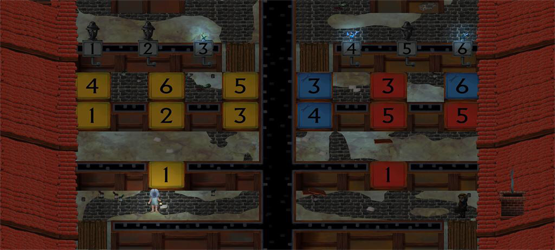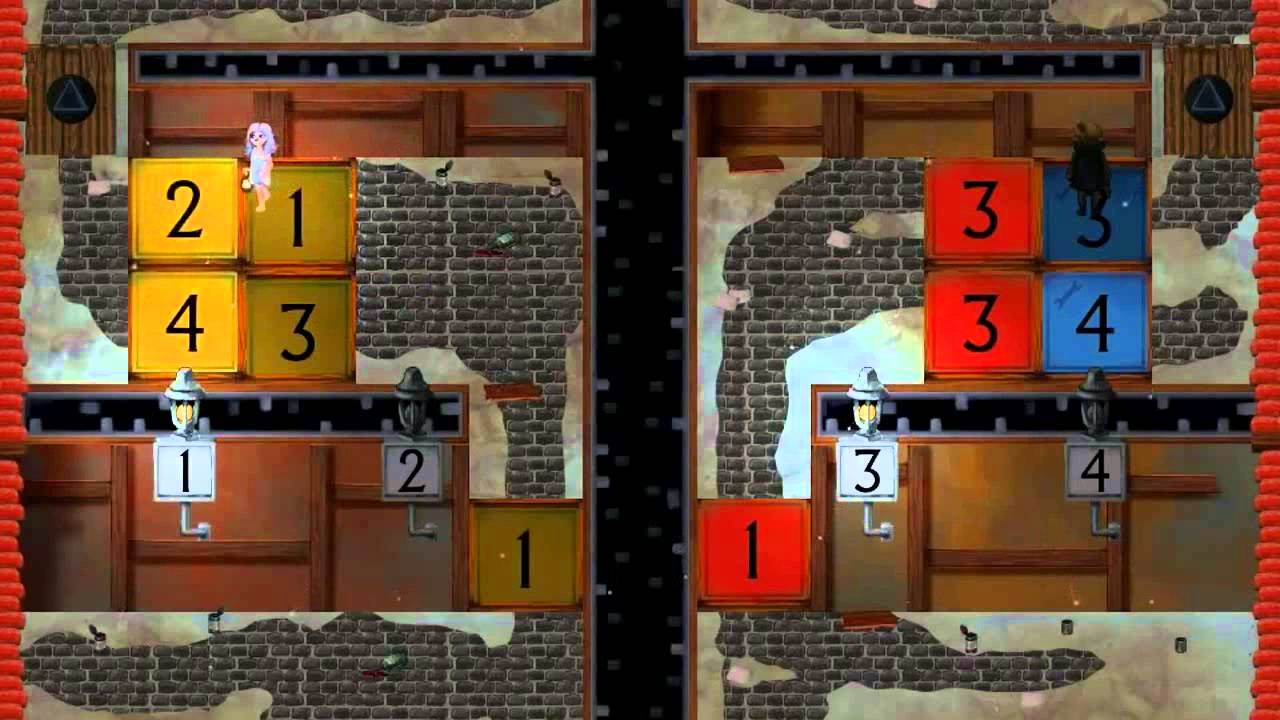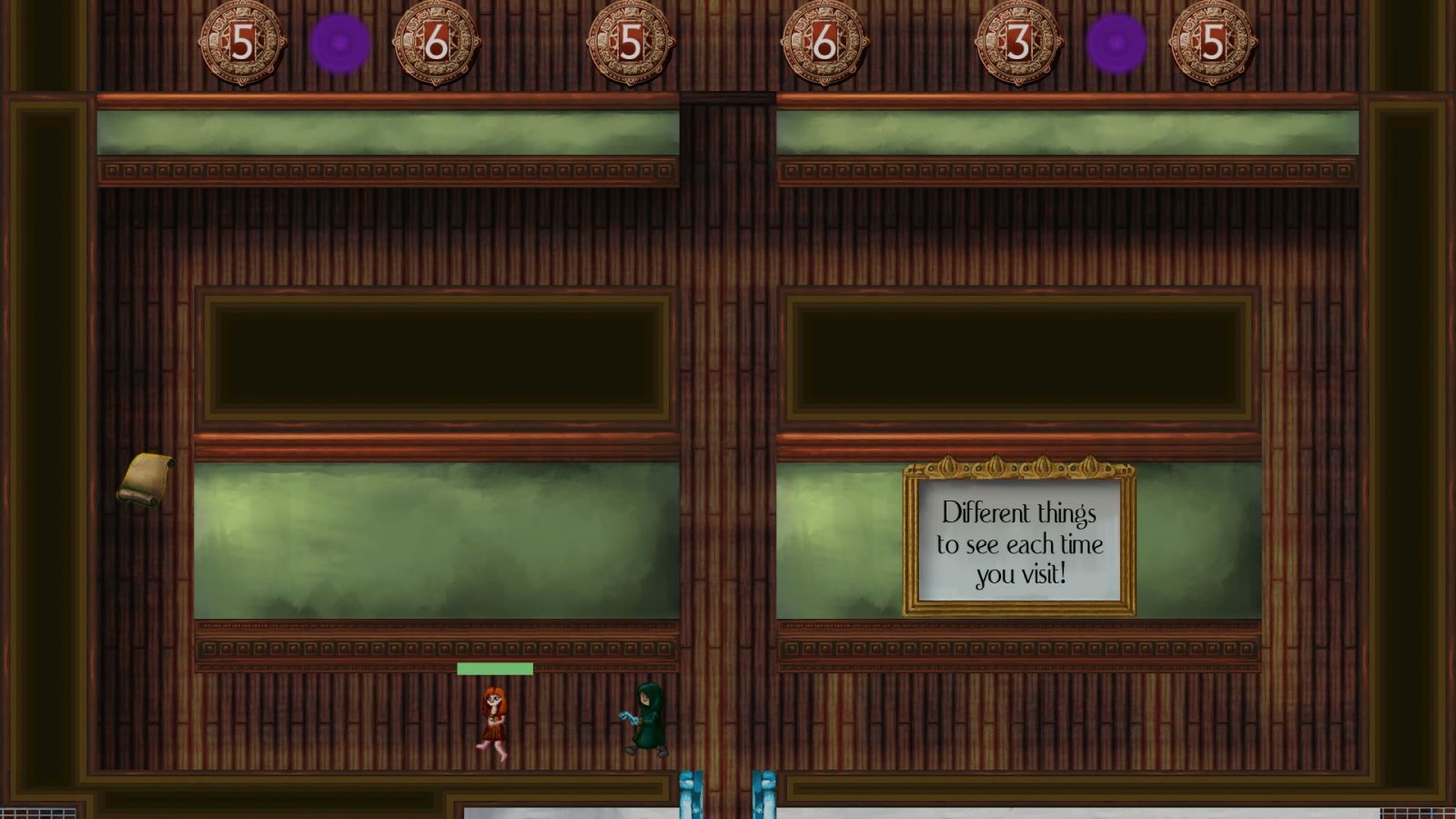Pillar is a tough game to review. When first presented with the game, it can be quite confusing. The first thing it will have you do is select a personality from six different types; distant, focused, giving, capable, enduring and renewing. Each one puts you in the shoes of a different character that evokes that personality type, and it also changes the type of game Pillar becomes. It’s unique, and definitely will not be for everybody, but getting through the initial pre-show to reach the main event is definitely worth it.
The game, designed, developed and with music by Michael Hicks, was designed to tell a story without the typical narrative that most games use to get the message across. There is a story, according to the games website: “Lost in an intimate snowy town, a palette of individuals are in search of a mysterious artifact said to bring great knowledge and understanding. Lead each character through their quest in this collection of mini-games, each with unique personalities and challenges… maybe their paths aren’t so different after all.” but this is not presented to you through the usual dialogue, cuts-cenes etc., but rather through the gameplay itself. It’s a bold choice, but after spending some time with the game, it seems like it’s one that has paid off.
Each two personalities / characters are linked together in the same space and after spending some time navigating their world alone, they end up together, which changes the gameplay as the characters must rely on each other in order to advance. It’s an interesting mechanic especially when the puzzles get increasingly difficult as the game progresses.
Focused Distance
The first set of personalities are distant and focused and put us in the shoes of a male artist and a girl. Distant sees you assume the role of the artist and has you using an easel to create speakers on the map (that are activated by a pressure pad) that are used to distract the ‘enemies’ (really just normal people) so that you can sneak past. It’s a simplistic yet interesting mechanic that draws you into the game (if you chose either of these two to start with, of course) and shows you that while it has some elements that are used in other games, it very much wants to be its own thing.
Focused sees you assume the role of the female character who prefers a more aggressive, yet still stealthy approach to reach her goal. She will throw rocks at the other people in order to move them out of their designated area so that you can pass by. The main focus of these two characters is to avoid people as much as possible, which is in tune with the distant and focused personality types, as these are typically associated with introverts that prefer to keep to themselves.
It’s not overly subtle, but it tells a story without saying a word, and that is truly a special thing in this modern age of boom, talk, boom games.
The Capability to Give…Light!
The second set of personalities; capable and giving puts you in the shoes of a young girl and an older man who must work together to move through a progressively harder set of rooms by lighting all the lights. Sounds simple, right? Guess again. The first couple of rooms are simple enough, helping establish the mechanics you need to know before moving on. Then, around about the fourth room, a real doozy crops up.
To give this some context, the yellow pads on the left turn on the lights, blue pads repair broken lights, and red pads turn off lights that are already on and breaks those that aren’t. It took me about an hour before I realized how to repair number 6 and still have number 5 remain on, and I won’t spoil how here, but it was very much an “a-ha!” moment for me.
In this scenario, the girl is associated with giving as she turns on the lights that allow us to proceed, while the man is associated with capable as he is able to repair the lights, but also tear them down. To me, this is a metaphor for the decisions we make to help people versus not helping them (I could be wrong, but this is my interpretation), and I was impressed with the nuance with which it was presented here.
No Enduring Without Renewing
The final two personalities are enduring and renewing and they bring the games more traditional puzzle game mechanics to the forefront. You are tasked with leading your characters (sometimes controlling both at the same time) through a series of rooms that have a locked door which is unlocked by the renewing character, and a series of numbered switches that are closed by our enduring character.
The catch is that while the enduring character is being moved around, you are also moving the renewing character and any switch they walk over that has been closed, they reopen. It makes you evaluate your routes, plan accordingly and use the portals to your advantage. Some of the rooms are a head-scratcher at first, but just like the light puzzle above, once you figure them out, there is a sense of accomplishment not found in a lot of modern games, which I think is a testament to the developer.
They are three different experiences, but all very similar to each other at the same time. The visual style and aesthetic is not going to win any awards for originality in 2015, but its simple, effective, and not there to be the main attraction anyway. There are some very pretty hand-painted backdrops in the game however, and despite being a top down 2D game, it still managed to draw me in.
The game’s music is also worth applauding. It was composed by the games designer as mentioned above, and it shows. Each piece of music perfectly parallels the gameplay and as someone who adores good music in video games, I was surprisingly impressed with the synchronicity between gameplay and score in Pillar.
All in all, Pillar is a very good game. It’s pretty, charming, original in its execution and its obvious from the get-go that it was designed with a love for video games and a passion to do something different with them. Basing a game around the Myers-Briggs test (a test I had to take in my day job when I first started) and the personality types associated with it was an interesting idea and I think Mr. Hicks should be applauded for his inventive spirit and his want to make something that stands out from the crowd. We need more things like this in the gaming world.
Review code provided by publisher. For information on scoring, you can check our review policy here.
-
Original ideas wrapped in familiar game mechanics
-
Beautiful hand-painted backdrops
-
Deals with interesting themes
-
Difficult yet rewarding
-
At times, a little too difficult
-
Might not be appealing to the more impatient type
Pillar Review Gallery
-
Pillar

-
Pillar

-
Pillar

-
Pillar

-
Pillar

-
Pillar

-
Pillar

-
Pillar












